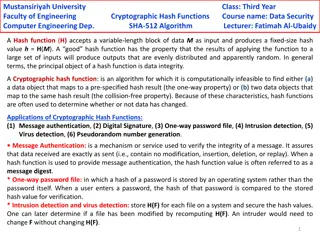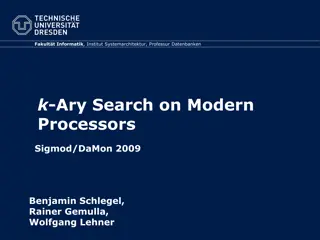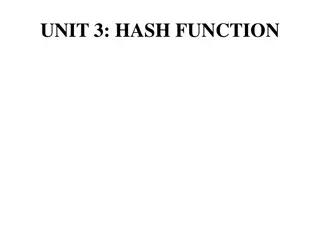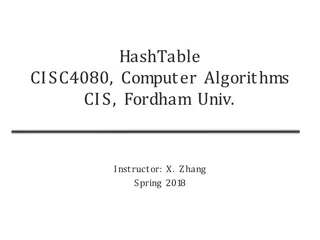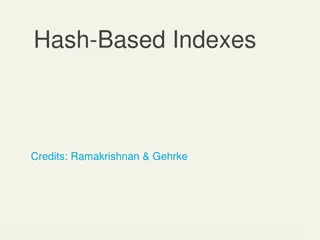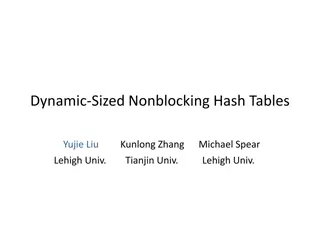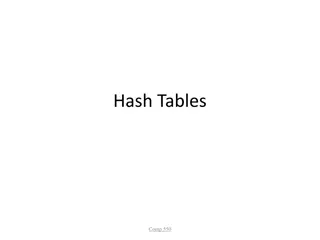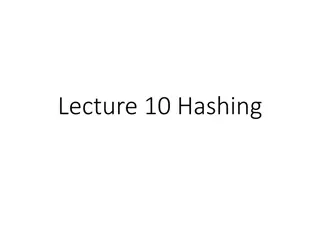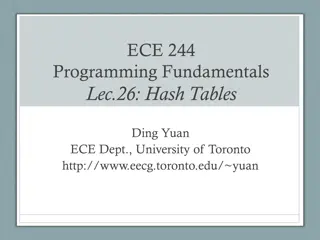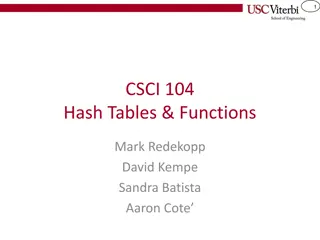Linear Search and Hash Tables Explained
Learn about the concepts of linear search and hash tables in computer science. Dive into understanding how linear search finds elements in a list sequentially and how hash tables optimize data retrieval by mapping keys to values efficiently. Explore different search algorithms and their applications through practical examples and visual explanations.
Download Presentation

Please find below an Image/Link to download the presentation.
The content on the website is provided AS IS for your information and personal use only. It may not be sold, licensed, or shared on other websites without obtaining consent from the author.If you encounter any issues during the download, it is possible that the publisher has removed the file from their server.
You are allowed to download the files provided on this website for personal or commercial use, subject to the condition that they are used lawfully. All files are the property of their respective owners.
The content on the website is provided AS IS for your information and personal use only. It may not be sold, licensed, or shared on other websites without obtaining consent from the author.
E N D
Presentation Transcript
Topic 9 Linear Search and Hash Tables
Announcements Participation due tomorrow FunSort explanation posted
FunSort FunSort(list, low, high) returns list if (low < high) then FunSort(list, low, high-1) if list[high-1] > list[high] then swap list[high-1] and list[high] FunSort(list, low, high-1) end if end if end FunSort
FunSort TL;DR 5 4 3 2 1 3 4 5 2 1
More on Homework 4 Program arguments public static void main(String[] args) { for (int i = 0; i < args.length; i++) System.out.println(args[0]); } bash$ java cs345_prog1 hello world hello world Images
Searching Definition:
Interpolation/Phonebook Search 0 8946 9999
N Log(n) Log(log(n))
Hash Tables Definition:
Deletion Chaining


